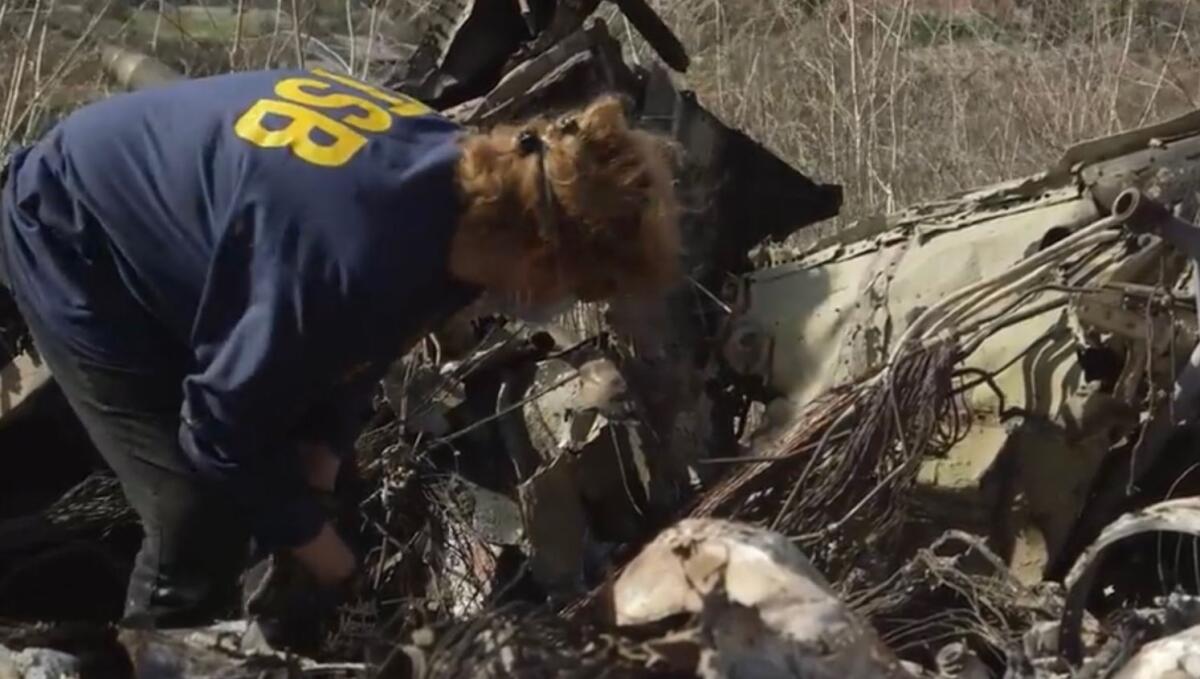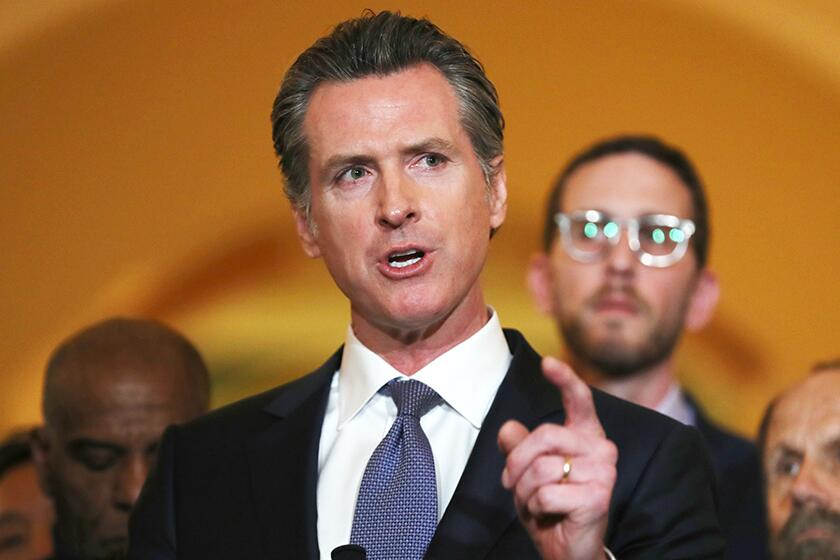Kobe Bryant’s pilot didn’t rely solely on helicopter guidance tools despite heavy fog. Was he allowed to?

- Share via
Why did the pilot of the helicopter ferrying Kobe Bryant and seven others Sunday morning fly under visual flight rules rather than relying on only his instruments designed to help him navigate through foggy conditions?
That is a key question both investigators and aviation experts are asking in the wake of the crash, which occurred when the chopper slammed into a hill in Calabasas amid low visibility.
For the record:
6:18 p.m. Jan. 31, 2020This story and headline were changed to clarify the way investigators say the pilot was flying the helicopter before the crash. The pilot used some of the helicopter’s instruments while flying. But officials said he was under visual flight rules, not instrument flight rules. Under IFR, he would have been relying fully on the instruments for navigation.
The pilot, Ara Zobayan, was personally certified to fly in bad weather using only his instruments. But Island Express Helicopters, which operated the Sikorsky S-76B chopper, has a certification from the Federal Aviation Administration that limits the company’s pilots to flying only under visual flight rules, according to Eric Weiss, a National Transportation Safety Board spokesman. That means the company’s pilots were not authorized to fly using only instruments in the cockpit but had to navigate by sight, which requires good visibility.
Visual flight rules are based on the principle of see and avoid.
A journey under VFR requires at least three miles of visibility and a cloud ceiling at least 1,000 feet above the ground.
When operation of an aircraft under VFR isn’t safe, often because of inclement weather, FAA regulations sometimes allow a pilot to fly under instrument rules, meaning the pilot navigates only by instruments in the cockpit.
Experts say Zobayan could have broken those rules by declaring that the aircraft was in distress, but likely would have faced intense scrutiny from federal regulators. Island Express Helicopters also would have been opened up to questioning and possible punishment from the FAA, said Michael Lenz, a retired safety program analyst with the Federal Aviation Administration.
“If a pilot declares an aircraft in distress, that takes priority. It’s a big deal,” Lenz said. “But he would have to explain what he did and why he did it. He might even be fired by the operator for doing something so blatant.”
The helicopter circled for roughly 13 minutes over Glendale awaiting clearance from air traffic controllers to continue its trip under special visual flight rules that would grant clearance to fly in weather conditions with less than the minimum visibility for regular visual flying.
As Zobayan approached the hills of Calabasas at 150 mph, air traffic control radioed him, telling him he was too low to be seen on radar. Minutes later, the pilot advised he was climbing to avoid a cloud layer. He rose roughly 875 feet in less than a minute and then began a descending turn before slamming into the hillside, according to a Times analysis of flight data.
Randy Waldman, a helicopter flight instructor in Los Angeles, told The Times this week that based on the information provided by authorities, and the pilot’s rapid incline and descent, the pilot could have become disoriented in the dense, patchy fog that had obscured some of the area and gone into a fatal dive.
“It’s very possible that it went from bad visibility to no visibility in a second,” he said. “The top of the hillside that morning was completely obscured.”
The FAA’s helicopter flying handbook states that losing all visual references during a flight “can cause sensory overload” for a pilot, who can then lose the ability to think rationally.
Investigators combing the crash site this week are focusing on weather as one of the factors that may have contributed to the crash. Investigators also are probing other aspects of the flight, including Zobayan’s background, the airworthiness of the helicopter and whether a mechanical failure played a role.
On Tuesday, the National Transportation Safety Board announced that the helicopter was not equipped with a terrain alarm system that could have warned the pilot he was approaching a hillside. Investigator Jennifer Homendy said her agency had recommended 16 years ago that the FAA require all choppers carrying six or more passengers be equipped with a terrain awareness and warning system. Homendy said the FAA “failed to act” on the proposal.
Zoey Tur, an L.A. television helicopter pilot and journalist, said Zobayan probably did not want to break federal aviation regulations and face penalties from the FAA by switching to instruments, or face losing a high-profile client by landing the helicopter early.
Zobayan was the chief pilot at Island Express Helicopters and had more than 8,000 hours of flight experience, Teri Neville, an attorney representing the company, said.
“He was calm, controlled and methodical,” Neville said. “He was not a showboat. He was not a grandstander. He was the guy you’d want in any kind of emergency situation.”
It is not clear how much experience Zobayan had using instruments. Switching midflight to instrument flying is not a simple task and takes practice, Tur said.
“Flying on instruments requires you to do it often, to get that recurrent training, and recurrent training is expensive — like going to flight safety or Eurocopter or Sikorsky and using their simulators,” Tur said.
Times staff writer Jaclyn Cosgrove contributed to this report.
More to Read
Sign up for Essential California
The most important California stories and recommendations in your inbox every morning.
You may occasionally receive promotional content from the Los Angeles Times.












